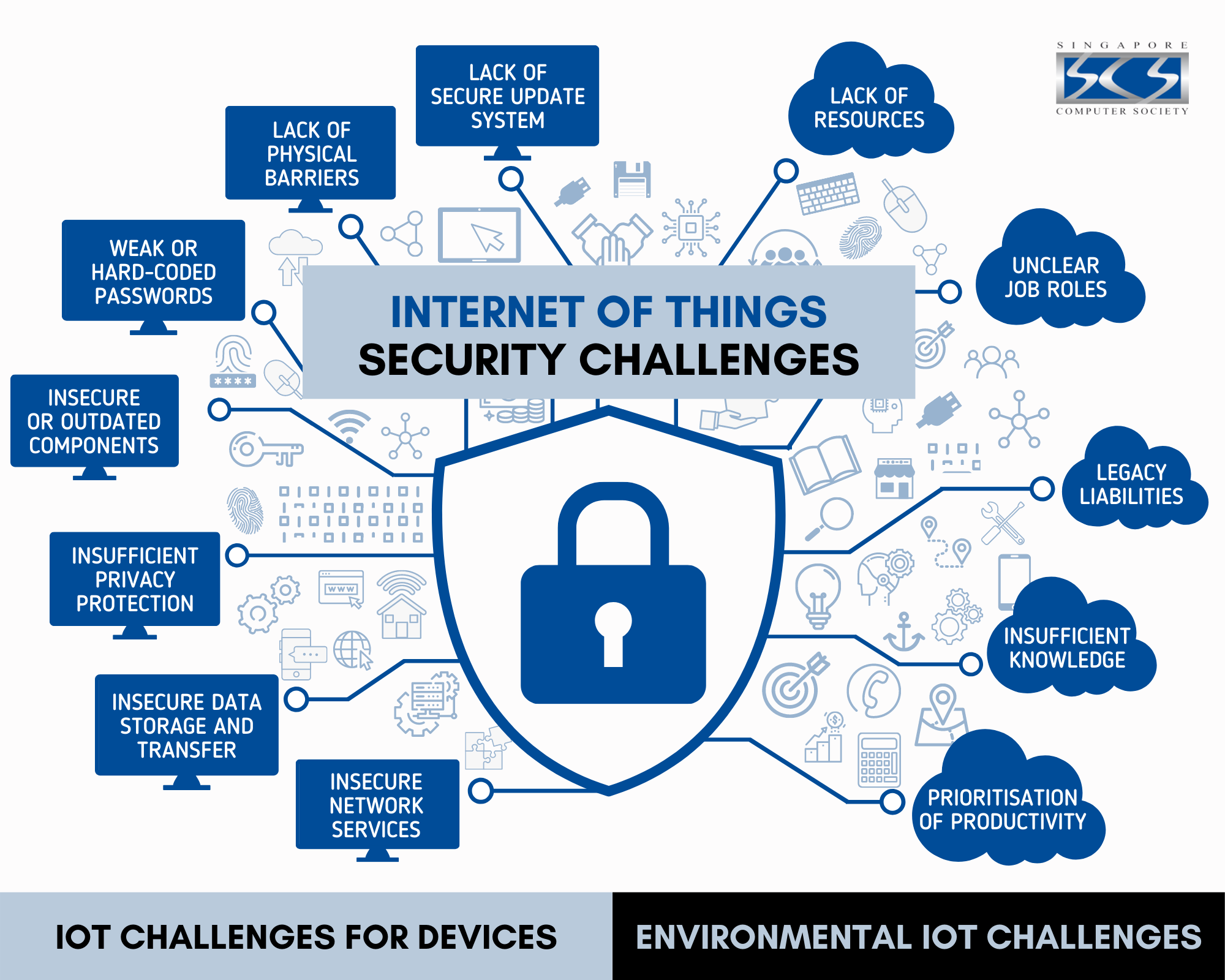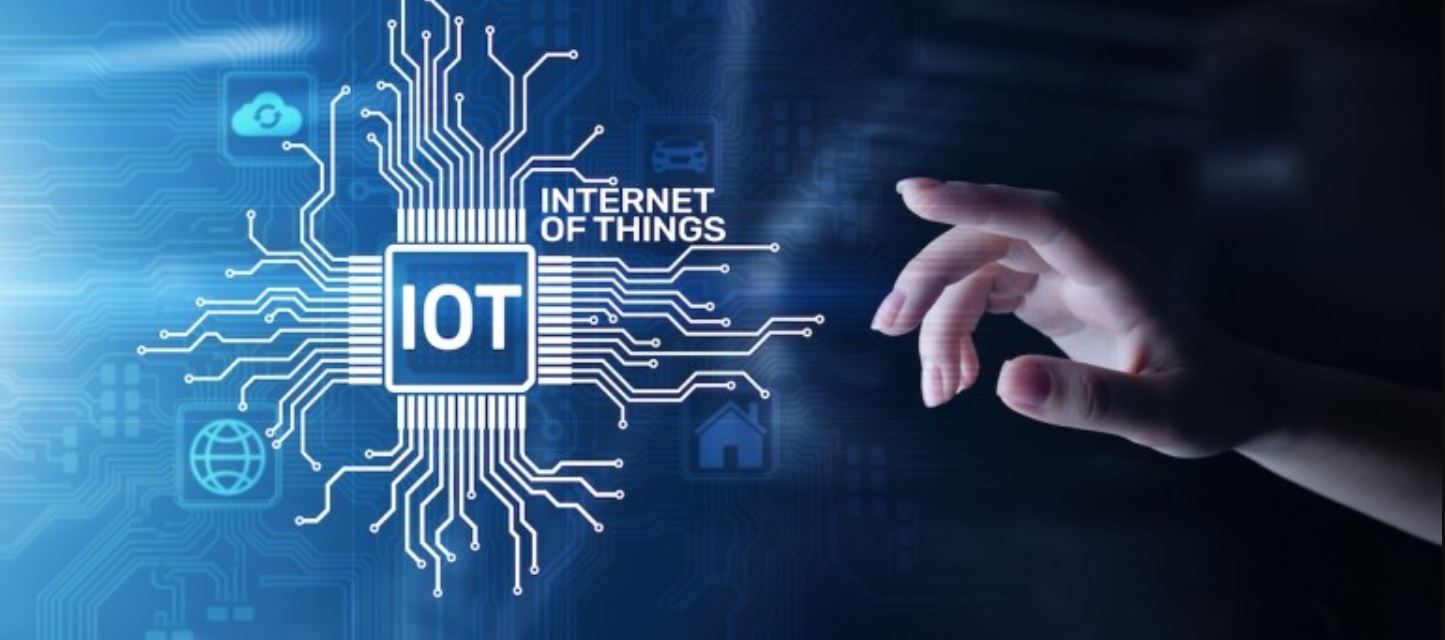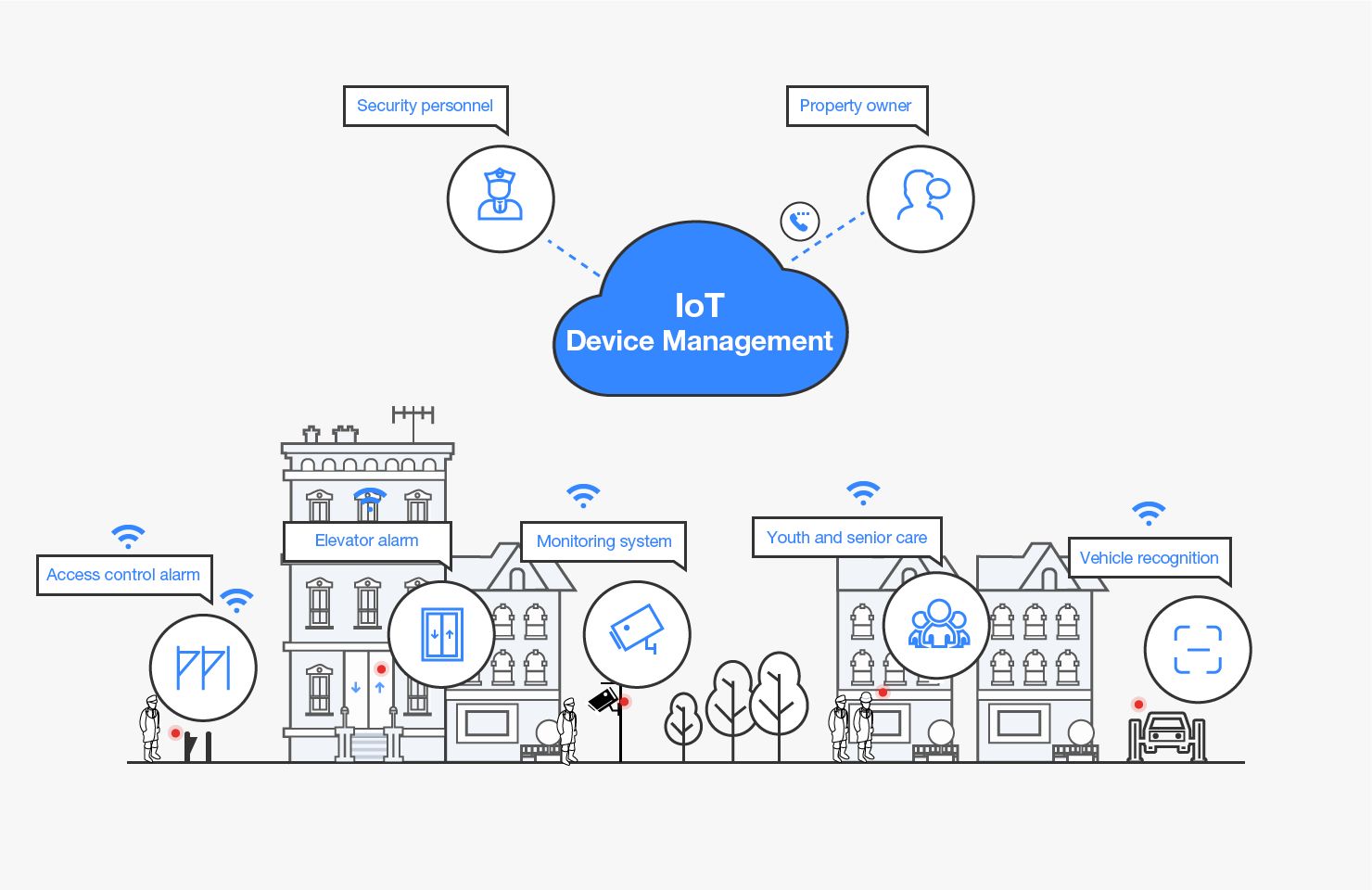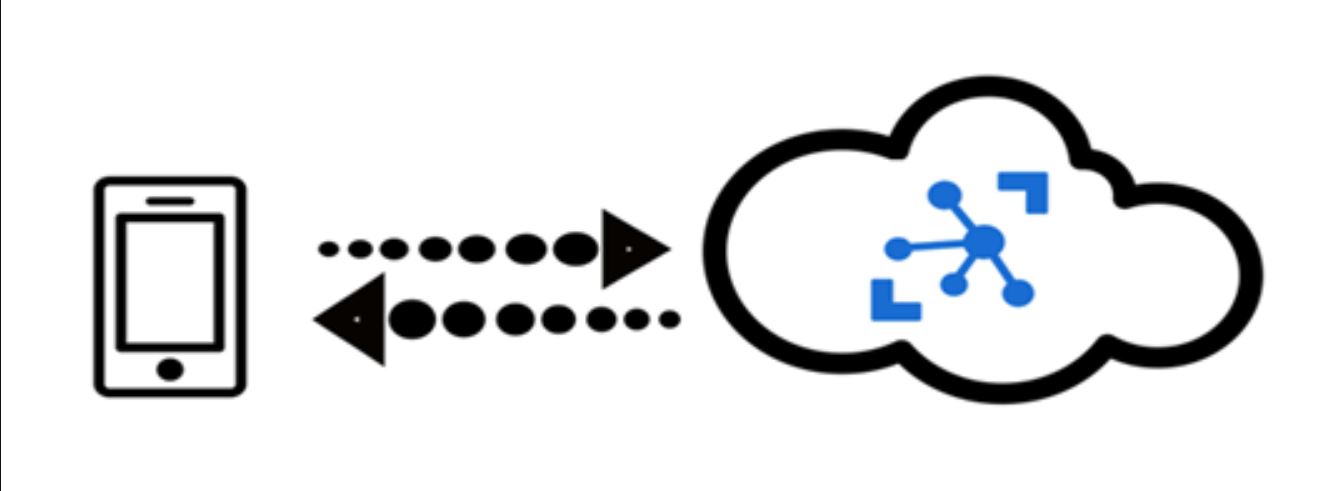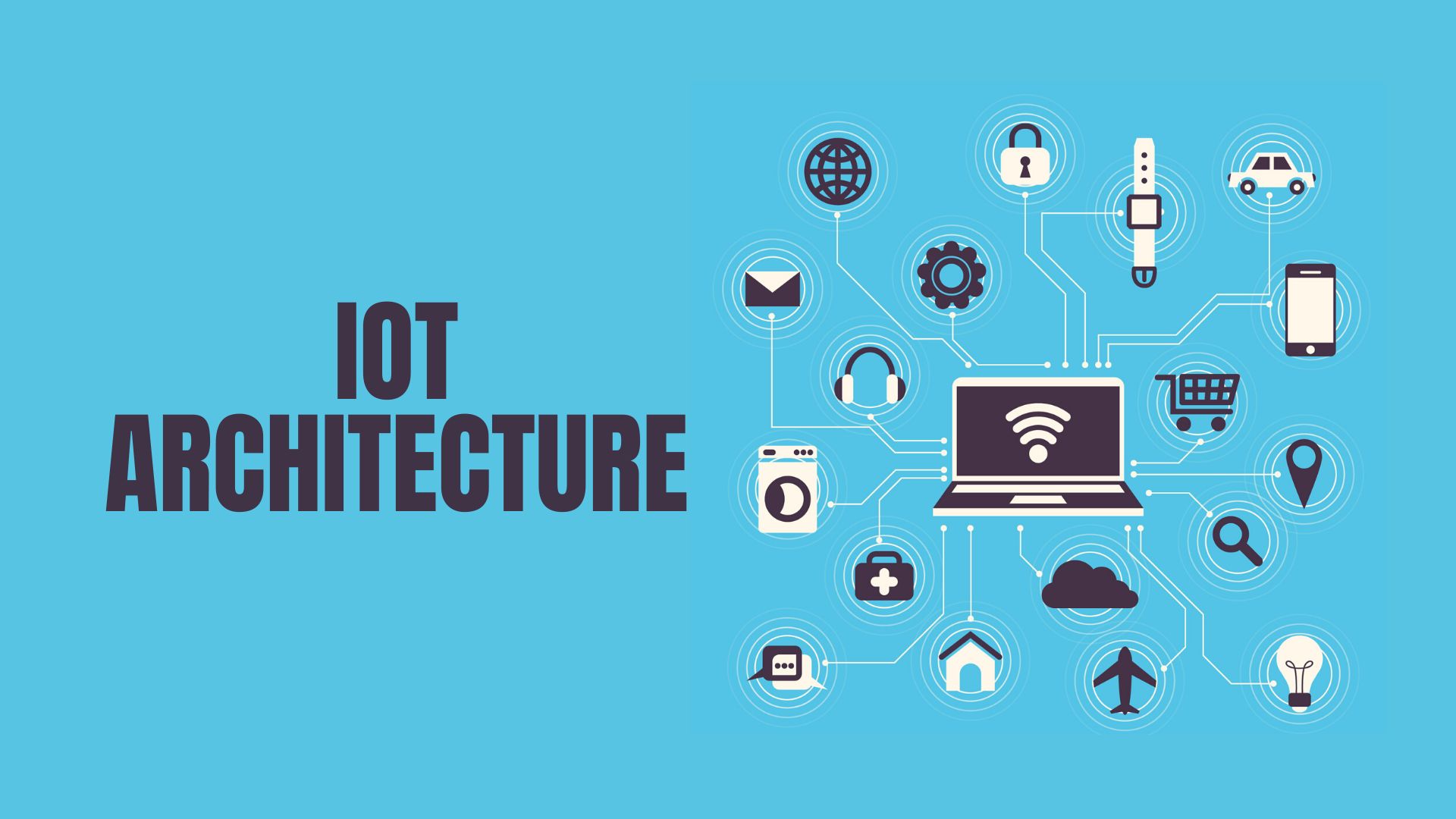Introduction
Welcome to the world of IoT, where everyday objects are connected to the internet and seamlessly communicate with each other. IoT, short for the Internet of Things, is revolutionizing the way we interact with technology and the world around us.
Imagine a world where your refrigerator can automatically order groceries when you’re running low, or your thermostat adjusts the temperature based on your preferences and habits. This is the power of IoT devices.
IoT devices encompass a wide range of objects, from smart home appliances to wearable fitness trackers, and even industrial systems. They collect and exchange data, enabling us to make more informed decisions and automate processes for greater efficiency.
In this article, we’ll explore the concept of IoT and its benefits, discuss popular IoT devices, and learn how to access and connect to them. Whether you’re a tech enthusiast or simply curious about the latest technological advancements, this article will provide insights into the exciting world of IoT.
What is IoT?
The Internet of Things (IoT) refers to the network of physical objects embedded with sensors, software, and connectivity capabilities, allowing them to collect and share data over the internet. These objects, also known as “things,” can range from everyday household items such as thermostats and door locks to complex industrial machines.
The core concept behind IoT is the interconnectivity of devices, enabling them to communicate and interact with each other without direct human intervention. By connecting these objects to the internet, they can exchange data and perform tasks that were once only possible through manual intervention.
The data collected by IoT devices can be analyzed and utilized to improve efficiency, productivity, and decision-making. For example, a smart agricultural system equipped with sensors can monitor soil moisture levels and automatically water the crops when necessary, optimizing water usage and ensuring healthy plant growth.
IoT has the potential to transform various industries, such as healthcare, transportation, and manufacturing. In healthcare, wearable devices can monitor a patient’s vital signs and transmit real-time data to healthcare providers, allowing for remote monitoring and early detection of health issues.
Furthermore, IoT can enable “smart cities,” where urban infrastructure is interconnected to enhance efficiency and sustainability. For instance, traffic lights can adjust their timings based on traffic flow, reducing congestion and improving overall transportation management.
Overall, IoT is revolutionizing the way we interact with technology and the world around us. It opens up new possibilities for automation, data-driven decision-making, and improving overall quality of life. As more devices become connected, the potential for innovation and connectivity grows, shaping a future where technology seamlessly integrates into our daily lives.
Benefits of IoT Devices
IoT devices offer a wide range of benefits that enhance efficiency, convenience, and connectivity in various aspects of our lives. Here are some key advantages of incorporating IoT devices into our daily routines:
1. Automation and Efficiency: IoT devices automate various processes, reducing the need for manual intervention. For example, smart home devices can adjust lighting and temperature based on occupancy, optimizing energy usage and saving costs.
2. Data Collection and Analysis: IoT devices collect vast amounts of data, allowing for detailed analysis and insights. This data can be used to make informed decisions, identify patterns, and improve efficiency in various industries.
3. Improved Convenience: IoT devices provide convenience by enabling remote control and monitoring. For instance, you can use a smartphone app to control your home security system while you’re away or monitor your pet through a connected camera.
4. Enhanced Safety and Security: IoT devices can enhance safety and security measures. Smart home security systems offer remote monitoring, real-time alerts, and the ability to lock doors or turn off appliances, providing peace of mind.
5. Healthcare Advancements: IoT devices have the potential to revolutionize healthcare. Wearable devices can continuously monitor vital signs and transmit data to healthcare professionals, enabling remote monitoring and early detection of health issues.
6. Optimized Resource Usage: IoT devices can optimize resource usage in various sectors. For example, smart agriculture systems can monitor soil moisture levels and deliver the right amount of water to crops, reducing water waste and increasing crop yield.
7. Improved Decision Making: The data collected by IoT devices can provide valuable insights for decision-making processes. Businesses can use this data to identify trends, improve operational efficiency, and offer personalized customer experiences.
8. Efficient Transportation: IoT devices play a crucial role in transportation systems, enabling real-time traffic updates, smart parking solutions, and monitoring vehicle health to prevent breakdowns and accidents.
9. Environmental Impact: By optimizing resource usage and reducing waste, IoT devices can contribute to a more sustainable future. Energy management systems can reduce energy consumption, and smart waste management systems can improve recycling and reduce landfill waste.
10. Innovation and Future Potential: IoT is still an evolving technology with vast potential for innovation. As more devices become connected and data-driven, the possibilities for improvements in various industries are endless.
The benefits of IoT devices extend across different domains, improving efficiency, convenience, and sustainability in our daily lives. By embracing IoT, we can leverage technology to create a more connected and intelligent world.
Popular IoT Devices
The rise of IoT technology has led to the development and popularity of various innovative devices that enhance our daily lives. Here are some of the most popular IoT devices available on the market:
1. Smart Home Assistants: Devices like Amazon Echo, Google Home, and Apple HomePod are voice-activated virtual assistants that can control connected devices in your home, play music, answer questions, and provide information through voice commands.
2. Smart Thermostats: These devices, such as the Nest Thermostat, can be connected to your home’s heating and cooling systems and learn your preferences to automatically adjust the temperature for optimal comfort and energy savings.
3. Smart Security Systems: Devices like Ring Doorbell and Arlo Security Cameras offer features such as motion detection, live video streaming, and remote monitoring, providing increased security and peace of mind to homeowners.
4. Smart Lighting: IoT-enabled light bulbs, such as Philips Hue, allow you to control and schedule the lighting in your home through mobile apps or voice commands. You can set up lighting scenes, change colors, and even integrate them with virtual assistants.
5. Wearable Fitness Trackers: Popular fitness trackers like Fitbit and Apple Watch collect data on your physical activity, heart rate, sleep patterns, and more. They provide real-time insights and motivation to help you maintain a healthy lifestyle.
6. Smart Appliances: Smart refrigerators, washing machines, and ovens offer advanced features like inventory tracking, remote control, and energy optimization. These connected appliances make everyday tasks more convenient and efficient.
7. Smart Entertainment Systems: IoT devices like smart TVs, streaming devices (such as Roku and Chromecast), and sound systems provide seamless integration and control of your entertainment experience. You can stream your favorite shows and movies and control them with your voice or smartphone.
8. Connected Cars: Many modern cars are equipped with IoT capabilities that allow for features like GPS navigation, remote vehicle control, and real-time diagnostics. Connected cars enhance safety, improve fuel efficiency, and provide a more connected driving experience.
9. Smart Health Monitors: Devices such as smart blood pressure monitors, glucose meters, and sleep trackers provide individuals with valuable health information. These devices can connect to mobile apps or healthcare systems to monitor and manage health conditions.
10. Industrial IoT Devices: IoT technology is also widely used in industries like manufacturing, transportation, and agriculture. Applications range from asset tracking and predictive maintenance to supply chain management and precision agriculture.
These are just a few examples of the wide range of IoT devices available today. As technology continues to advance, we can expect even more innovative devices to enter the market, further enhancing connectivity and making our lives smarter and more efficient.
How to Access IoT Devices
Accessing IoT devices involves connecting to them and interacting with their functionalities. The specific steps may vary depending on the device and manufacturer, but here are some general guidelines to help you get started:
- Connect to the Same Network: Ensure that both your IoT device and the device you’re using to access it (e.g., smartphone or computer) are connected to the same Wi-Fi network. This enables communication between the devices.
- Download the App or Software: Most IoT devices have dedicated apps or software that allow you to control and manage them. Visit the respective app store or manufacturer’s website to download and install the app/software on your device.
- Follow the Device’s Setup Instructions: Each IoT device comes with its own setup process. This typically involves connecting the device to power, connecting it to your Wi-Fi network, and registering it within the app or software. Follow the provided instructions carefully until the device is successfully connected.
- Create an Account: Some IoT devices require you to create an account within the app or software. This allows you to personalize settings, receive notifications, and access the device remotely. Follow the prompts to create an account if necessary.
- Pair the Device: After the initial setup, your device may need to be paired with the app or software. This often involves scanning a QR code or following on-screen prompts to establish a secure connection between the device and your device’s app/software.
- Explore and Customize: Once your device is connected and paired, you can explore the various features and settings within the app or software. Depending on the device, you may be able to control settings, automate tasks, receive alerts, or access additional functionalities offered by the IoT device.
- Utilize Voice Commands: If your IoT device is compatible with voice assistants like Amazon Alexa or Google Assistant, you may be able to control it using voice commands. Follow the instructions provided by the manufacturer to link your IoT device to your preferred voice assistant.
- Update Firmware: Regularly check for firmware updates for your IoT device within the app or software. Keeping your device’s firmware up to date ensures optimal performance, security enhancements, and access to new features.
Remember to consult the user manual or manufacturer’s website for device-specific instructions and troubleshooting tips. As technology evolves, accessing IoT devices may become even more streamlined and user-friendly, making it easier for users to connect and interact with their IoT devices seamlessly.
Connecting to IoT Devices at Home
Connecting IoT devices at home allows you to enjoy the convenience and automation they offer. Here are the steps to connect IoT devices to your home network:
- Choose a Reliable Wi-Fi Network: Ensure that you have a stable and reliable Wi-Fi network at home. If needed, upgrade your router to a newer model that supports the latest Wi-Fi standards for better connectivity.
- Find the Device’s Wi-Fi Setup Mode: Most IoT devices have a specific mode for initial setup. This is often indicated by a blinking LED light or a physical button on the device. Refer to the device’s user manual to locate the setup mode.
- Enable Setup Mode and Connect to the Device: Activate the setup mode on your IoT device, usually by pressing and holding the setup button. Once the setup mode is enabled, use your smartphone or computer to connect to the device’s temporary Wi-Fi network. This network name is often indicated in the device’s manual or on the device itself.
- Open the Device’s App or Software: Launch the app or software associated with your IoT device on your smartphone or computer. If you haven’t already done so, make sure to download it from the app store or manufacturer’s website.
- Follow the App’s Setup Instructions: The app or software will guide you through the process of connecting the IoT device to your home network. You may need to enter your Wi-Fi network’s name (SSID) and password to establish the connection. Follow the on-screen instructions carefully and wait for the setup process to complete.
- Assign Device Name and Preferences: Once connected, you may be prompted to assign a name to your IoT device and customize its preferences. This step is crucial if you have multiple IoT devices, as it allows you to easily identify and control each device within the app or software.
- Test and Ensure Connectivity: After completing the setup process, test the connectivity between the IoT device and your smartphone or computer. Verify that you can control the device’s functions, receive notifications, and access its features through the app or software.
- Place the Device in an Optimal Location: For best performance, consider the placement of your IoT device. Keep it within range of your Wi-Fi network and avoid obstructions that may hinder signal strength. Additionally, consult the device’s manual for any specific placement instructions or recommendations.
- Secure your IoT Network: Protect your IoT devices and home network by changing default passwords, enabling two-factor authentication if available, and keeping firmware updated. Regularly check for firmware updates within the app or software provided by the manufacturer.
By following these steps, you can easily connect and set up IoT devices within your home network. Remember to consult your device’s user manual or manufacturer’s website for specific instructions and troubleshooting tips. With your IoT devices successfully connected, you can enjoy the convenience, automation, and control they bring to your daily life.
Connecting to IoT Devices Outdoors
IoT devices are not limited to indoor use; they can also be beneficial when used outdoors. Whether it’s a smart security camera or a weather monitoring device, here’s how you can connect IoT devices outdoors:
- Check for Outdoor Compatibility: Before purchasing an IoT device for outdoor use, ensure that it is designed and rated for outdoor environments. Look for devices with weatherproof or waterproof features to withstand various outdoor conditions.
- Choose a Reliable Wi-Fi Network: Ensure that your outdoor area has sufficient Wi-Fi coverage. If needed, consider extending the range of your home network using Wi-Fi extenders or routers specifically designed for outdoor use.
- Position Wi-Fi Router Strategically: Optimize the placement of your Wi-Fi router to provide better signal strength and coverage to outdoor areas. Consider placing the router near a window or mounting it on a higher location for better reach.
- Extend Wi-Fi Coverage: If your Wi-Fi network doesn’t reach the desired outdoor areas, you can use Wi-Fi range extenders or outdoor access points to extend the coverage range. These devices can bridge the gap between your home network and the outdoor IoT devices.
- Choose Proper Power Source: Outdoor IoT devices may require a power source. Ensure the availability of power outlets or consider devices that can be powered by batteries or solar energy, depending on your specific needs.
- Connect IoT Device to Wi-Fi: Follow the manufacturer’s instructions to connect the IoT device to your Wi-Fi network. This typically involves using a companion app or software provided by the device manufacturer.
- Place IoT Device in Optimal Location: Position the outdoor IoT device in an optimal location to ensure proper signal reception and functionality. Avoid obstructions such as walls or trees that may weaken the Wi-Fi signal.
- Test Connectivity and Functionality: Once connected, test the IoT device’s connectivity and functionality. Verify that you can access and control the device through the companion app or software from your smartphone or computer.
- Consider Network Security: As with indoor IoT devices, prioritize network security when connecting outdoor devices. Change default passwords, enable any available security features, and keep the device’s firmware updated to protect against potential vulnerabilities.
- Monitor Performance: Regularly monitor the performance of your outdoor IoT devices to ensure they are functioning properly. Check for firmware updates and troubleshoot any connectivity issues that may arise.
By following these steps, you can successfully connect and set up IoT devices outdoors. Keep in mind that specific instructions may vary depending on the device and manufacturer, so consult the device’s user manual or the manufacturer’s website for detailed instructions and troubleshooting guidance.
Security Considerations
While IoT devices offer convenience and automation, it’s important to prioritize security to protect your personal information and prevent unauthorized access. Here are some key security considerations when using IoT devices:
- Change Default Passwords: Many IoT devices come with default credentials. It’s crucial to change these passwords immediately to prevent unauthorized access. Choose strong, unique passwords that are not easily guessable.
- Enable Two-Factor Authentication: Whenever possible, enable two-factor authentication (2FA) for your IoT devices. This adds an extra layer of security by requiring a second verification step, such as a unique code sent to your phone, when logging in or accessing the device.
- Regularly Update Firmware: Keep your IoT device’s firmware up to date by regularly checking for and installing any available updates. Firmware updates often contain security patches and bug fixes that address vulnerabilities identified by the manufacturer.
- Secure Your Home Wi-Fi Network: Protect your entire network by securing your home Wi-Fi network. Use strong encryption (such as WPA2) and a unique network name (SSID). Set a strong password for Wi-Fi access to prevent unauthorized devices from connecting to your network.
- Implement Network Segmentation: Consider segmenting your network by creating separate Wi-Fi networks for your IoT devices and other devices connected to your network. This can help contain potential threats and minimize the impact of a security breach.
- Disable Unnecessary Features: Review your IoT device’s settings and disable any unnecessary features or functionalities. Limit access permissions to only what is required, reducing the potential attack surface.
- Regularly Monitor Device Activity: Keep an eye on your IoT devices for any suspicious activity or unexpected behavior. Monitor the device logs or any notifications provided by the companion app or software to detect any unauthorized access attempts.
- Secure Mobile Devices: Secure your smartphones and tablets that are used to access and control IoT devices. Use strong passcodes or biometric authentication, keep your devices updated with the latest software patches, and be cautious of installing apps from untrusted sources.
- Stay Informed: Stay updated on the latest news and security vulnerabilities related to your specific IoT devices. Follow the manufacturer’s website, forums, or online communities to remain informed about any security concerns or patches released by the manufacturer.
- Consider Third-Party Security Solutions: If you’re concerned about the security of your IoT devices, consider using third-party security solutions that provide additional layers of protection, such as network firewalls, intrusion detection systems, or security-focused routers.
By implementing these security considerations, you can enhance the protection of your IoT devices and safeguard your personal information and privacy. Remember that maintaining security is an ongoing process, so regularly reassess and update security measures as needed.
Troubleshooting Common Issues
While IoT devices are designed to enhance our lives, they can sometimes encounter issues that require troubleshooting. Here are some common issues you may encounter with IoT devices and potential solutions:
- Connection Problems: If your IoT device is not connecting to the network, ensure that you have entered the correct Wi-Fi credentials. Double-check your network settings and try restarting both the device and your router. If the issue persists, consider resetting the device to its factory settings and repeating the setup process.
- Interference and Range Issues: If your IoT device has a weak signal or experiences dropout, ensure it is within range of your Wi-Fi router. Avoid obstructions such as walls or large objects that may interfere with the Wi-Fi signal. Consider using Wi-Fi range extenders or outdoor access points to improve coverage in problematic areas.
- Device Unresponsiveness: If your IoT device becomes unresponsive, try restarting it. Disconnect the power, wait a few moments, and then reconnect it. If the device still does not respond, consult the device’s user manual for specific troubleshooting steps or contact the manufacturer’s customer support for assistance.
- Firmware Update Failures: If the firmware update process fails, check your internet connection and ensure that you have sufficient storage space on your device. Try restarting the firmware update process or manually downloading and installing the latest firmware from the manufacturer’s website. If the issue persists, contact the manufacturer’s support for further guidance.
- App or Software Malfunctions: If the companion app or software for your IoT device is not functioning properly, try clearing the app cache, restarting your device, or reinstalling the app. Ensure that you have the latest version of the app installed. If the problem persists, reach out to the app developer or the device manufacturer’s support team for assistance.
- Compatibility Issues: Some IoT devices may have compatibility issues with certain operating systems, home networks, or other devices. Check for device-specific requirements and compatibility information before purchasing. If compatibility issues arise, contact the device manufacturer for support or consider using alternative devices or software.
- Power Supply Problems: If your IoT device is not receiving power or experiences intermittent power loss, check the power source and connections. Ensure that the power outlet is functioning correctly and that the power adapter is securely connected. Test the power outlet with another device to verify its functionality.
- Device Integration Challenges: Integrating multiple IoT devices within a connected smart home ecosystem can sometimes be complex. Ensure that your devices are compatible with each other, and follow the manufacturer’s instructions for integration. If integration issues persist, consult the manufacturer’s support or seek assistance from smart home technology professionals.
- Security Concerns: If you have concerns about the security of your IoT devices, double-check your network security settings, change default passwords, and enable any available security features. Keep your devices updated with the latest firmware releases and follow best practices for IoT security outlined in the device’s user manual.
- Insufficient Device Support: If you encounter issues that are not resolved with troubleshooting steps or if your device lacks adequate support, reach out to the manufacturer’s customer support or engage with online communities and forums dedicated to IoT devices. These resources can provide additional insights, solutions, or workaround options.
Remember to consult the device’s user manual or the manufacturer’s website for device-specific troubleshooting guidance. By following these troubleshooting steps and seeking appropriate support, you can overcome common issues and ensure the optimal functioning of your IoT devices.
Conclusion
The world of IoT is constantly expanding, offering us a vast array of devices that enhance our lives with automation, connectivity, and convenience. From smart home assistants and security systems to wearable fitness trackers and industrial IoT solutions, the possibilities are endless.
In this article, we explored the concept of IoT and its benefits. We discussed popular IoT devices that have gained widespread recognition and how to access and connect to these devices both indoors and outdoors. We also emphasized the importance of considering security measures and troubleshooting common issues that may arise when using IoT devices.
As you embrace IoT technology, it’s important to stay informed about the latest advancements, security practices, and updates related to your specific devices. Always refer to the device’s user manual and the manufacturer’s website for specific instructions and support.
IoT devices hold tremendous potential to transform our lives, offering increased efficiency, convenience, and connectivity. By understanding how to access and utilize these devices effectively while prioritizing security and troubleshooting when needed, you can fully harness the power of IoT and create a smarter, interconnected world.










